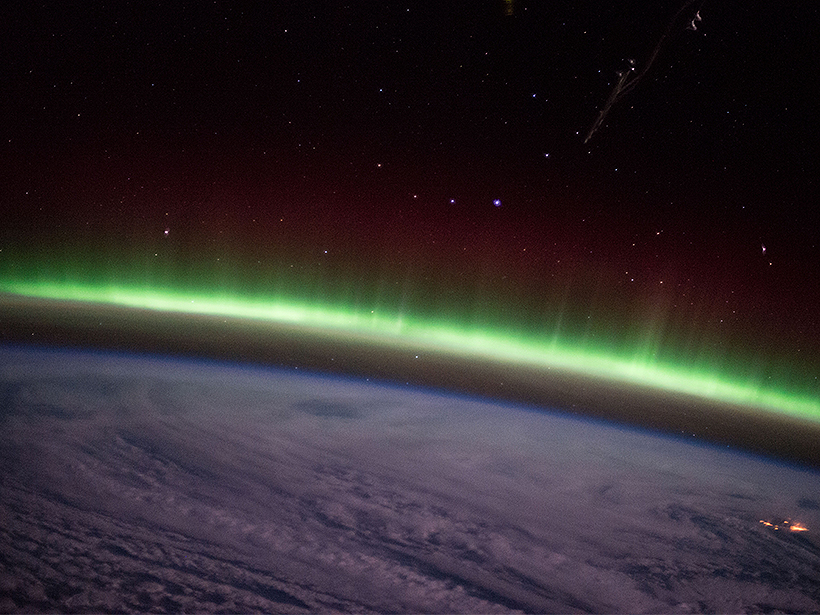Source: Journal of Geophysical Research: Space Physics
Roughly every other day at the Arctic Yellow River Station in Svalbard, Norway, astronomers observe a mysterious feature of the aurora borealis, the glowing ring of energetic particles around Earth’s magnetic North Pole. The equatorward edge of the aurora briefly erupts in a fanning starburst of light, which can span roughly 15,000 kilometers in length.
Scientists think that this display, called a “throat aurora,” results from high-speed jets of solar particles slamming into the outer boundary of Earth’s magnetic field. It’s well known that such jets can make temporary indentations in the magnetosphere, causing charged particles to collide and release energy as light. However, little direct evidence for such a connection to throat auroras has been found to date.
Establishing the link requires collecting satellite and on-the-ground measurements simultaneously—a tricky technical feat. To overcome that challenge, Han et al. pointed high-powered digital cameras in Svalbard at the same region of space that NASA’s Magnetospheric Multiscale Mission spacecraft would pass through as it approached the magnetopause, the boundary between Earth’s magnetic field and space. In January 2016, they captured a series of images of throat auroras from the ground while simultaneously measuring fluctuations in Earth’s magnetic field from space.
The throat auroras lined up beautifully with surges of solar energy into the magnetosphere, in a one-to-one correspondence, they found. Big jets of solar particles appeared to produce large throat auroras, whereas smaller ones led to fainter flares. This strong relationship suggests that throat auroras could be used as reliable signatures of disturbance in Earth’s magnetic field, according to the researchers. Such indicators could help predict space storms, which can disrupt global communication networks. (Journal of Geophysical Research: Space Physics, https://doi.org/10.1002/2017JA024945, 2018)
—Emily Underwood, Freelance Writer
Correction, 12 June 2018: The post has been updated to reflect a more accurate span for the starburst of light at the aurora’s edge.
Citation:
Underwood, E. (2018), Mysterious aurora borealis feature explained for the first time, Eos, 99, https://doi.org/10.1029/2018EO099861. Published on 30 May 2018.
Text © 2018. The authors. CC BY-NC-ND 3.0
Except where otherwise noted, images are subject to copyright. Any reuse without express permission from the copyright owner is prohibited.

